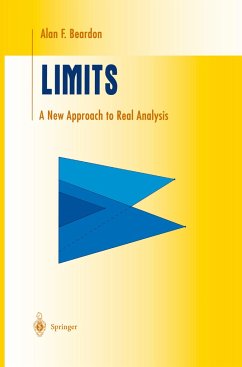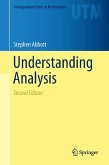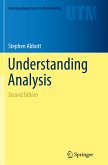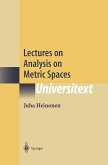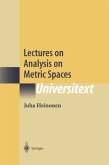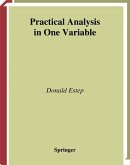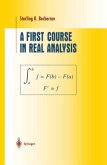This book is intended as an undergraduate text on real analysis and includes all the standard material such as sequences, infinite series, continuity, differentiation, and integration, together with worked examples and exercises. Despite the fact that there are hundreds of books on analysis on the market, by unifying and simplifying all the various notions of limit, the author has successfully presented a unique and novel approach to the subject matter, which has not previously appeared in book form. The author defines what is meant by a limit just once, and all of the subsequent limiting processes will be seen as special cases of this one definition. Accordingly, the subject matter attains a unity and coherence that is missing in the traditional approach. Students will be able to fully appreciate and understand the common source of the topics they are studying while also realizing that they are "variations on a theme" rather than essentially different topics, and therefore, will gain a better understanding of the subject. The book is divided into three sections. Part I contains preliminary material on sets, and on real and complex numbers. Part II starts with the definition of a limit and its basic properties, and continues with three basic results; the Intermediate Value Theorem, the Mean Value inequality, and the Cauchy Criterion, all of which are proved by bisection arguments. The last chapter in this section contains a detailed discussion of infinite series, including a treatment of unordered sums. Part III comprises the standard material in analysis, and because it follows from the basic ideas presented in the earlier section, much of the material progresses remarkably smoothly.
Broadly speaking, analysis is the study of limiting processes such as sum ming infinite series and differentiating and integrating functions, and in any of these processes there are two issues to consider; first, there is the question of whether or not the limit exists, and second, assuming that it does, there is the problem of finding its numerical value. By convention, analysis is the study oflimiting processes in which the issue of existence is raised and tackled in a forthright manner. In fact, the problem of exis tence overshadows that of finding the value; for example, while it might be important to know that every polynomial of odd degree has a zero (this is a statement of existence), it is not always necessary to know what this zero is (indeed, if it is irrational, we may never know what its true value is). Despite the fact that this book has much in common with other texts on analysis, its approach to the subject differs widely from any other text known to the author. Inother texts, each limiting process is discussed, in detail and at length before the next process. There are several disadvan tages in this approach. First, there is the need for a different definition for each concept, even though the student will ultimately realise that these different definitions have much in common.
Broadly speaking, analysis is the study of limiting processes such as sum ming infinite series and differentiating and integrating functions, and in any of these processes there are two issues to consider; first, there is the question of whether or not the limit exists, and second, assuming that it does, there is the problem of finding its numerical value. By convention, analysis is the study oflimiting processes in which the issue of existence is raised and tackled in a forthright manner. In fact, the problem of exis tence overshadows that of finding the value; for example, while it might be important to know that every polynomial of odd degree has a zero (this is a statement of existence), it is not always necessary to know what this zero is (indeed, if it is irrational, we may never know what its true value is). Despite the fact that this book has much in common with other texts on analysis, its approach to the subject differs widely from any other text known to the author. Inother texts, each limiting process is discussed, in detail and at length before the next process. There are several disadvan tages in this approach. First, there is the need for a different definition for each concept, even though the student will ultimately realise that these different definitions have much in common.

